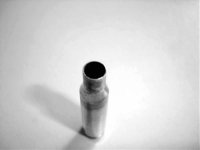After firing, all my brass shows a bit of damage to the case mouth. Looks like the case maybe hits the end of the chamber. New untrimmed or trimmed old brass all show this condition. Trimmed some cases short and same thing still happened. Requires me to square ends and bevel each time I reload.
Chambered some new, sized brass to see if ejectors or port was culprit. No marks of any kind noted to beveled case mouth.
This is a rebarreled 222. Thinking the chamber is reamed too short.
Any experts with clues or opinions?
Chambered some new, sized brass to see if ejectors or port was culprit. No marks of any kind noted to beveled case mouth.
This is a rebarreled 222. Thinking the chamber is reamed too short.
Any experts with clues or opinions?


